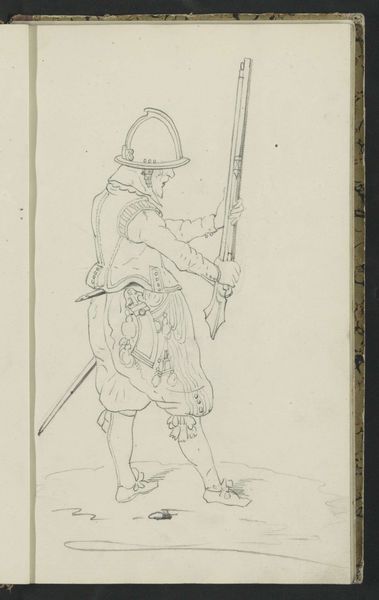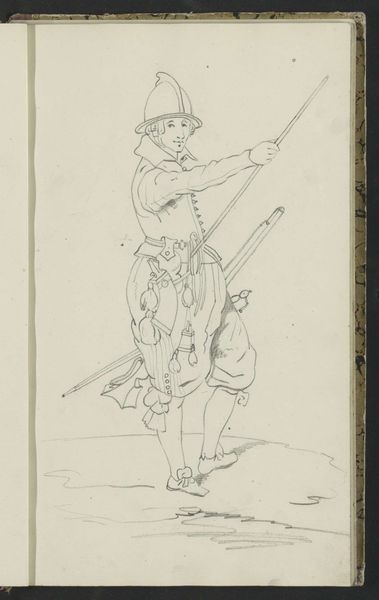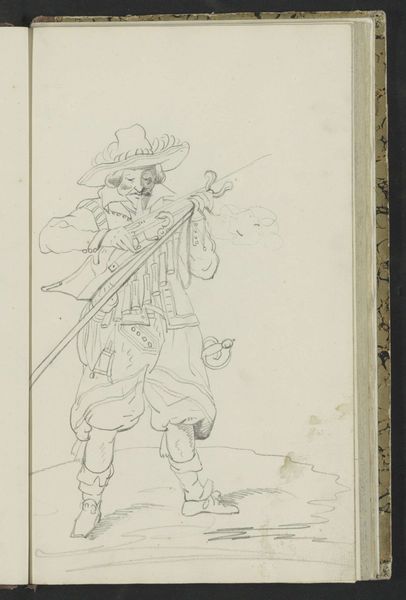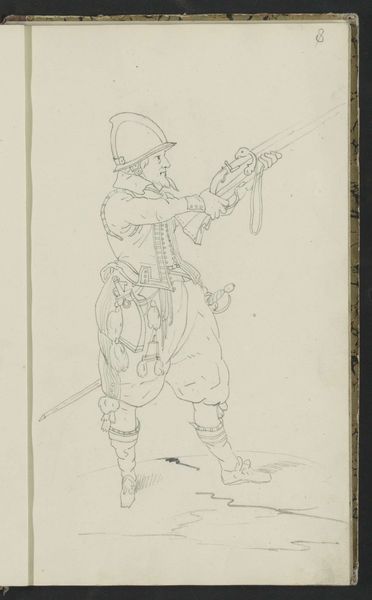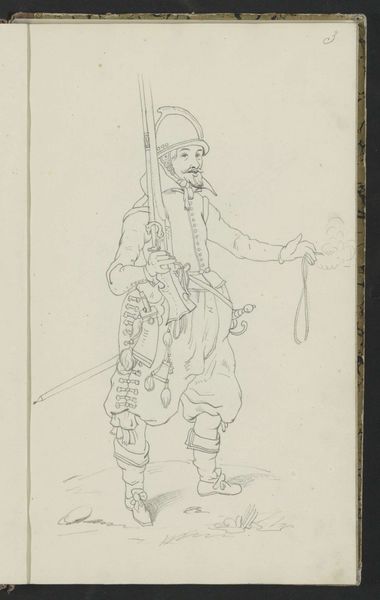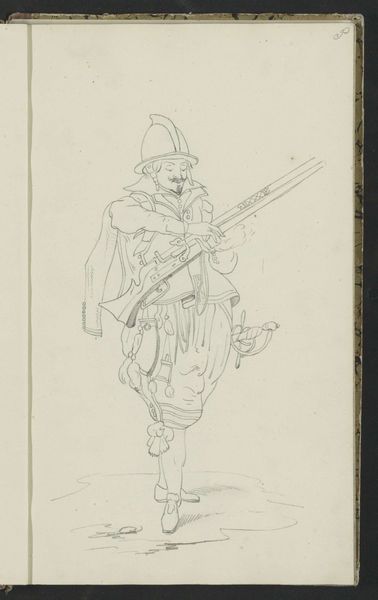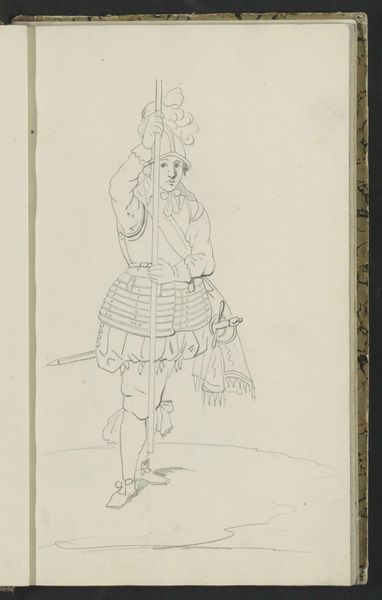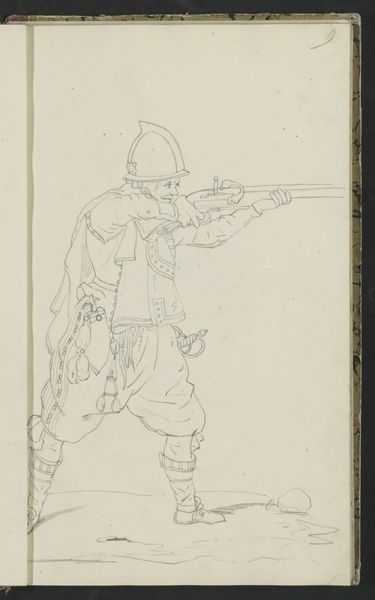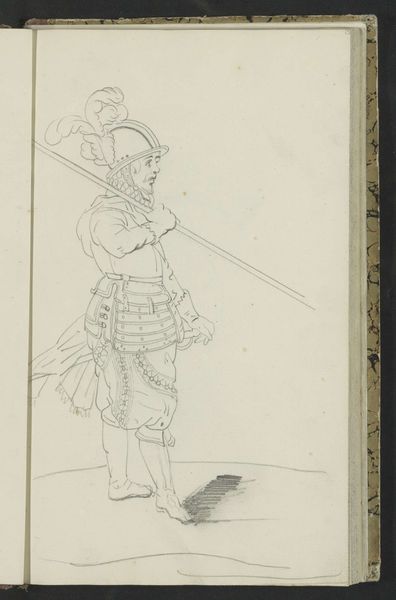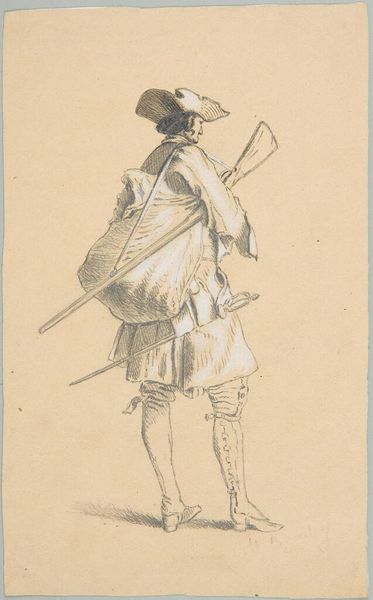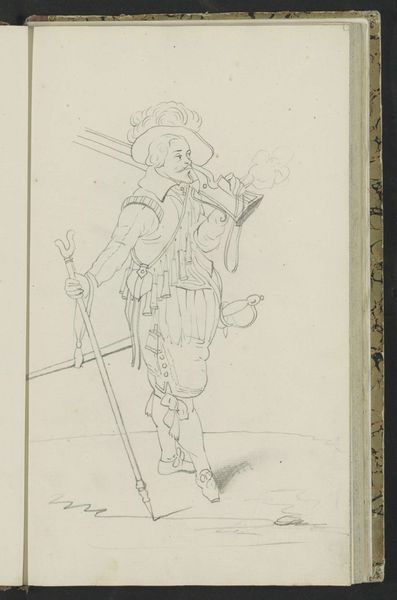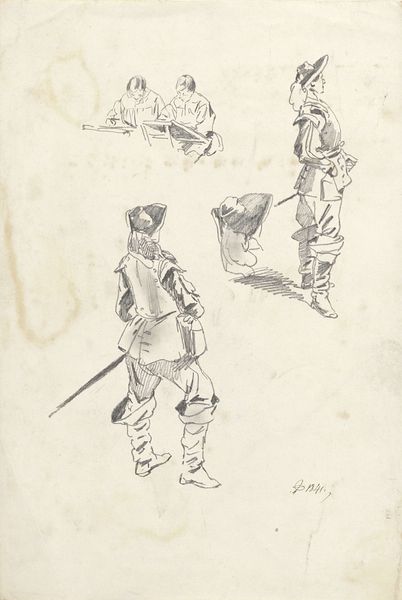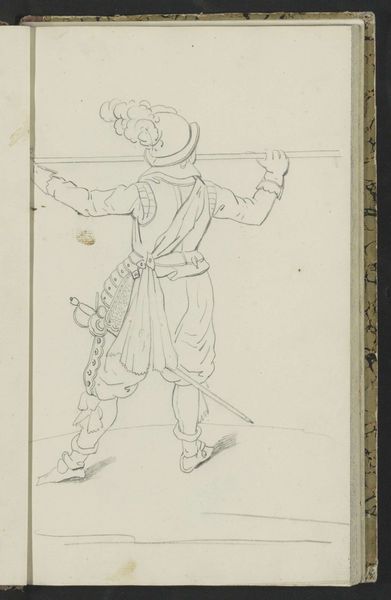
Soldaat die zijn musket in de linkerhand draagt en wiens rechterhand op zijn heup rust c. 1826 - 1888
0:00
0:00
drawing, pencil
#
portrait
#
drawing
#
imaginative character sketch
#
quirky sketch
#
cartoon sketch
#
figuration
#
personal sketchbook
#
ink drawing experimentation
#
pen-ink sketch
#
pencil
#
sketchbook drawing
#
watercolour illustration
#
history-painting
#
storyboard and sketchbook work
#
sketchbook art
Copyright: Rijks Museum: Open Domain
Editor: Here we have "Soldaat die zijn musket in de linkerhand draagt en wiens rechterhand op zijn heup rust," or "Soldier carrying his musket in his left hand and whose right hand rests on his hip", a pencil drawing by Johannes Antonius Canta, created sometime between 1826 and 1888. The sketch quality makes the figure seem almost playful, despite his military dress. What strikes you about the visual composition here? Curator: The linework is quite intriguing, wouldn’t you agree? Notice the confident, unbroken lines used to define the soldier’s back and the folds of his breeches, compared to the more hesitant, fragmented lines delineating the musket. Consider how that impacts the overall structure of the piece. Does that division tell us anything? Editor: Perhaps the artist was more interested in capturing the *form* of the soldier than in the details of his weapon? The human form is definitely more defined and seems to occupy more visual space than the rifle, for example. Curator: Precisely. Focus on the contrast. The smoothness of the soldier's back versus the angularity of the musket’s butt. It could even suggest a subtle tension between the man and his duty. Think of it almost as two distinct geometric planes meeting in the middle ground. Editor: I see it now! It's not just a representational sketch; it’s about the relationship of forms on the page, about creating dynamic contrasts in weight and texture. It highlights form as the foremost compositional quality. Curator: Absolutely! And observe the light and shadow suggested by the pencil strokes. It provides depth, drawing the eye around the figure and focusing our attention. It all directs us toward the material choices and artistic focus in the work, which gives new appreciation for how forms come together as part of a whole.
Comments
No comments
Be the first to comment and join the conversation on the ultimate creative platform.
